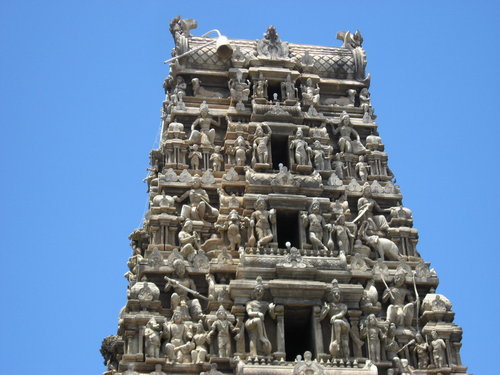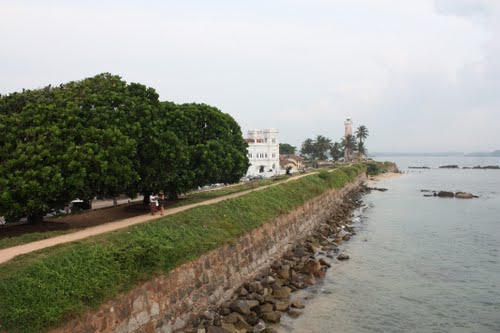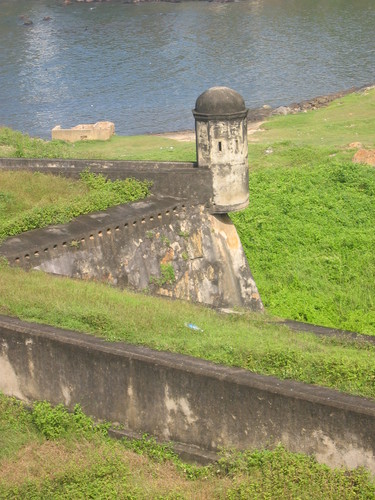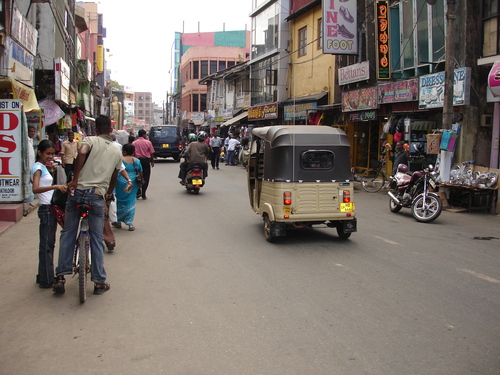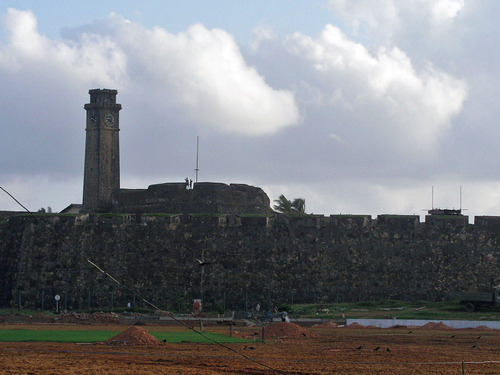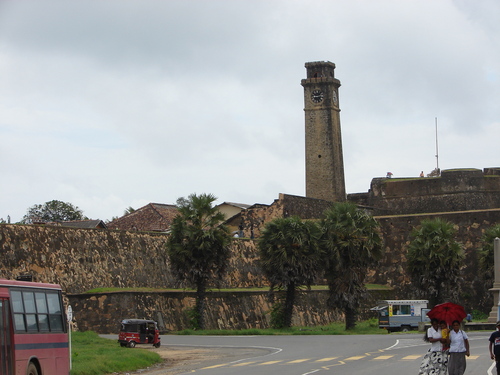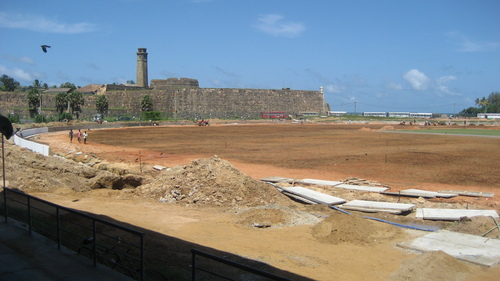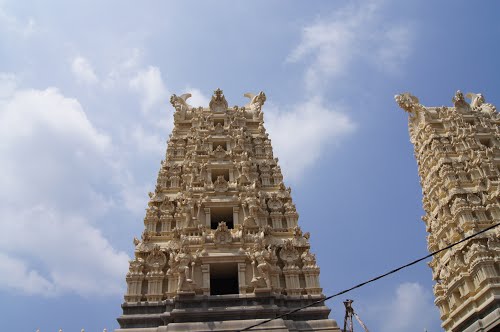Galle is a major city in Sri Lanka, situated on the southwestern tip, 119 km from Colombo. Galle is the administrative capital of Southern Province, Sri Lanka and is the district capital of Galle District. Galle is the fifth largest city in Sri Lanka after the capital Colombo, Kandy, Jaffna and Negombo.
Galle was known as Gimhathiththa before the arrival of the Portuguese in the 16th century, when it was the main port on the island. Galle reached the height of its development in the 18th century, during the Dutch colonial period. Galle is the best example of a fortified city built by the Portuguese in South and Southeast Asia, showing the interaction between Portuguese architectural styles and native traditions. The city was extensively fortified by the Dutch during the 17th century from 1649 onwards. The Galle fort is a world heritage site and is the largest remaining fortress in Asia built by European occupiers.
Other prominent landmarks in Galle include the city's natural harbor, the National Maritime Museum, St. Mary's Cathedral founded by Jesuit priests, one of the main Shiva temples on the island, and Amangalla the historic luxury hotel. On 26 December 2004 the city was devastated by the massive Tsunami caused by the 2004 Indian Ocean earthquake that occurred a thousand miles away, off the coast of Indonesia. Thousands were killed in the city alone. Galle is home to a cricket ground, the Galle International Stadium which is considered to be one of the most picturesque cricket grounds in the world. The ground which was severely damaged by the tsunami, was rebuilt and test matches resumed there on December 18, 2007.
Important natural geographical features in Galle include Rumassala in Unawatuna, a large mound-like hill, which forms the eastern protective barrier to the Galle harbour. Local tradition associates this hill with some events of Ramayana, one of the great Hindu epics. The major river in the area is the Gin River, which begins from Gongala Kanda and passes villages such as Neluwa, Nagoda, Baddegama, Thelikada and Wakwella, reaches the sea at Ginthota. The river is bridged at Wakwella by the Wakwella Bridge.
History
According to James Emerson Tennent, Galle was the ancient seaport of Tarshish, from which King Solomon drew ivory, peacocks and other valuables. Cinnamon was exported from Sri Lanka as early as 1400 BC and the root of the word itself is Hebrew, so Galle may have been a main entrepot for the spice.
Galle had been a prominent seaport long before western rule in the country. Persians, Arabs, Greeks, Romans, Malays, Indians, and Chinese were doing business through Galle port. In 1411, the Galle Trilingual Inscription, a stone tablet inscription in three languages, Chinese, Tamil and Persian, was erected in Galle to commemorate the second visit to Sri Lanka by the Chinese admiral Zheng He.
The "modern" history of Galle starts in 1502, when a small fleet of Portuguese ships, under the command of Lourenco de Almeida, on their way to the Maldives, were blown off course by a storm. Realising that the king resided in Kotte close to Colombo Lourenco proceeded there after a brief stop in Galle.
In 1640, the Portuguese had to surrender to the Dutch East India Company. The Dutch built the present fort in the year 1663. They built a fortified wall, using solid granite, and built three bastions, known as "Sun", "Moon" and "Star".
After the British took over the country from the Dutch in the year 1796, they preserved the Fort unchanged, and used it as the administrative centre of the district.




